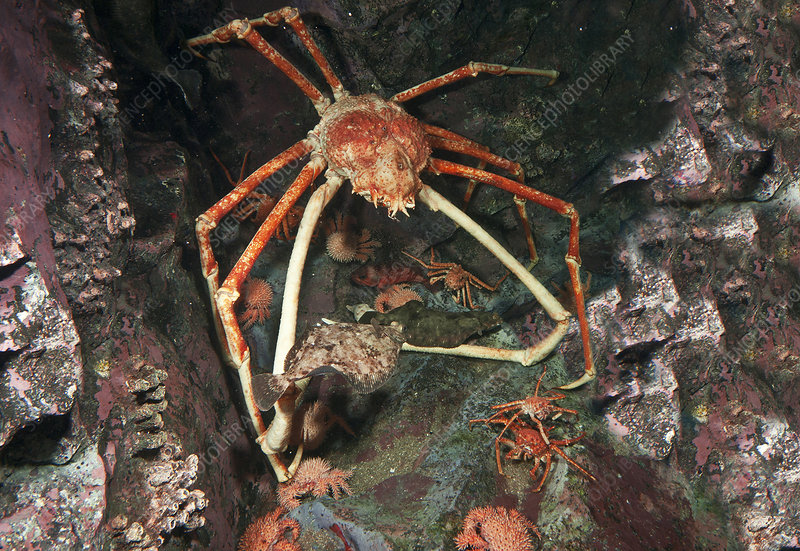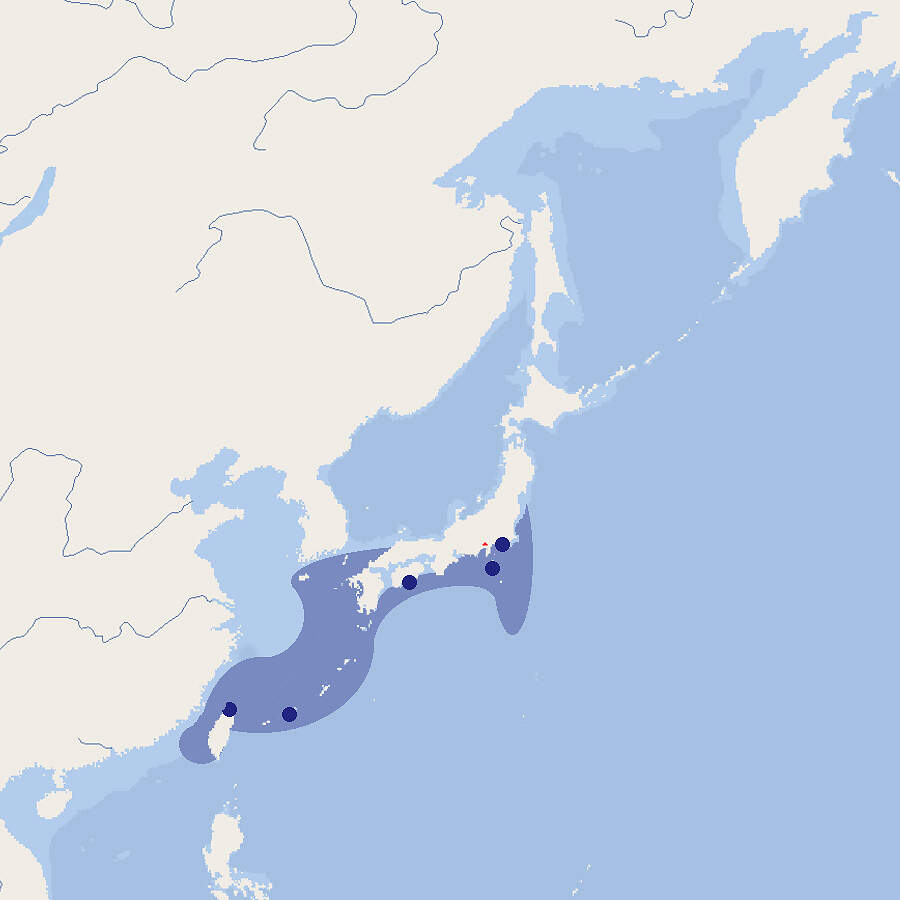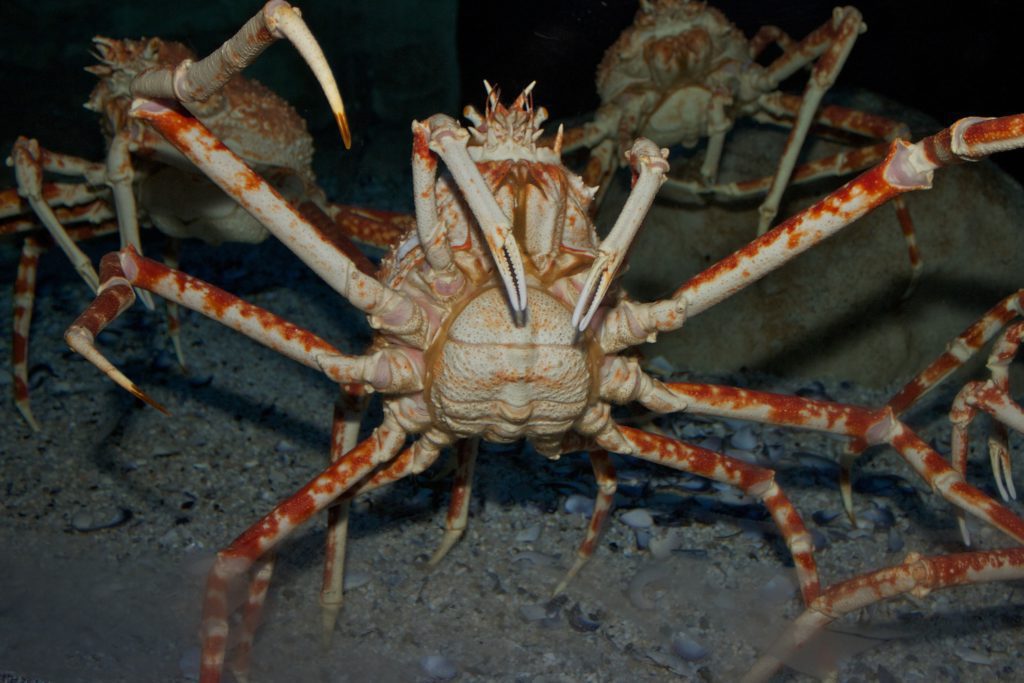Japanese spider crab (Macrocheira kaempferi)- this is the world's largest representative of the crustacean class, known for its huge size, long limbs and a mysterious way of life.
These crabs inhabit deep-sea areas of the Pacific Ocean near Japanwhere they lead a sedentary lifestyle and skillfully disguise themselves among the rocky bottom.

Classification
🔬 Scientific classification:
✔ The Kingdom: Animals (Animalia)
✔ Type: Arthropods (Arthropoda)
✔ Class: Crustaceans (Malacostraca)
✔ Row: Decapod crayfish (Decapoda)
✔ Family: Inachidae
✔ Gender: Macrocheira
✔ View: Macrocheira kaempferi
📌 Interesting!
Japanese spider crab the only representative of its kindwhich makes it unique among crabs.
Dimensions and appearance
📏 Impressive dimensions:
• Limb span: to 4 meters (from the tip of one claw to the other)
• Weight: to 20 kg
• Body length: to 40 cm
🎨 Appearance:
• Colour: orange-red with white spots
• Body: small, rounded, covered with spines
• Footboard: very long and thin
• Oko: located on long stalks
📌 Interesting!
Front claws significantly longer than all other limbsand that's what makes the crab so gigantic.

Living environment
🌍 Where does the Japanese crab live?
• Coast Japan (Pacific Ocean)
• Depth: 200-600 m
• Bottom: rocky, sandy or silty
🔍 Temperature conditions:
Prefers cool waters (10 to 15°C).
📌 Interesting!
In spring, crabs migrate to lower depths (50 m) for breeding purposes.
Lifestyle and behavior
🐚 Main Features:
• Slow, sedentary, and non-confrontational
• Master of Camouflage - attaches algae and sponges to the shell
• Centenarian - lives up to 100 years old!
📌 Interesting!
In nature, there are almost no predators capable of hunting adult spider crabs.

Food
🍖 What does a Japanese crab eat?
• Mollusks, soft-bodied invertebrates
• Carrion - remains of dead fish and marine animals
• Seaweed (sometimes)
🔍 Power supply method:
Japanese crab not an active hunter - it mainly feeds on dead organisms, performing the role of a seabed orderly.
Reproduction
👶 How do new crabs appear?
• Mating: spring, at a depth of up to 50 m
• Eggs: the female lays up to 1.5 million eggs
• Larvae: they swim in the water column for several months
• Young crabs: after metamorphosis, they settle to the bottom
📌 Interesting!
Just a small percentage the larvae survive and reach adulthood.
Human interaction
⚠ Is it dangerous for humans?
• Absolutely safe - not aggressive
• The pincers are strong, but not used for attacking
• It can only injure a person in self-defense
🏛 Threats and security:
• Caught as a delicacy in Japan
• The population is declining because of fishing
• Protected in some regions
📌 Interesting!
Japanese crabs they live in aquariumsFor example, in Tokyo Sea Life Parkwhere you can see them up close.

Interesting facts
📌 TOP 5 interesting facts about Japanese crab:
1️⃣ The largest arthropod on Earth
2️⃣ Lives up to 100 years
3️⃣ It has impressive strength in its claws
4️⃣ The largest specimens are found at great depths
5️⃣ It often becomes an object of myths and legends about sea monsters
Conclusion
Japanese Spider crab (Macrocheira kaempferi)- this is a unique sea giant, striking huge size, calm disposition and long life.
Despite its intimidating appearance, this crab absolutely safe for humans and even performs an important environmental rolecleaning the sea floor from organic residues.
Conservation of its natural habitat and controlled fishing will help to avoid the extinction of this amazing species.
